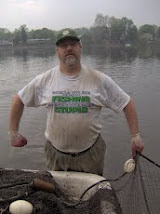I'M WALKING HERE
If you travel to Budapest, Hungary, we recommend staying on the Pest side of the river. There are lots of attractions and all within an easy walking distance or a quick ride on the metro. Though there are several sites on the Buda side including a magnificent view of the Parliament Building, it is hilly and, though Castle Hill, as this section of Buda is called, is popular during the day, it shuts down in the evening. What follows is a bit of what we visited on foot strictly on the Pest side of the Hungarian capitol.
 |
| BUDAPEST FERRIS WHEEL |
If you travel to Budapest, Hungary, we recommend staying on the Pest side of the river. There are lots of attractions and all within an easy walking distance or a quick ride on the metro. Though there are several sites on the Buda side including a magnificent view of the Parliament Building, it is hilly and, though Castle Hill, as this section of Buda is called, is popular during the day, it shuts down in the evening. What follows is a bit of what we visited on foot strictly on the Pest side of the Hungarian capitol.
K+K HOTEL OPERA
Janet booked us at the
centrally located K+K Hotel Opera in Budapest. It is on a quiet side street
just across from the Hungarian State Opera House which is on Andrássy út
(avenue).
 |
| HUNGARIAN OPERA INTERIOR |
K+K Hotels is a European
chain which was reasonably priced, had large rooms (for Budapest) and offered a
substantial buffet breakfast. Other amenities included a sauna and a modest
work out facility.
For our 5-day stay it
cost us approximately $750 USD.
We would consider the
K+K family of hotels again.
K+K HOTELS
 |
| NUTCRACKER STATUES |
When we saw a performance
of Johann Strauss’ operetta Die Fledermaus our second night in Budapest we left
our coats at the hotel and walked to the opera avoiding the coat check lines. The
hotel is literally just steps away from the Opera House. There are tours of the
opera house available, but you can also just walk into the lobby and ogle the
beautiful ornate interior. Previous to our arriving in Budapest, The Nutcracker
Suite was performing and on either side of the entrance they had massive
figurines from this holiday show twirling slowly in oversized glass tubes. The
whole experience was enchanting.
Janet used to have
season passes to the Philadelphia Opera and attending a performance at this
beautiful Hungarian State Opera was high on her list in planning a trip to
Budapest. Recently renovated all the seats had monitors for translating the
opera into a preferred language, either Hungarian or English. The seats were
great, 2nd row, seats 4 and 5. Tickets were reasonably priced at $70
each.
The Opera House is
located on Andrássy út. This avenue as well as the immediate environs are now
listed as a UNESCO World Heritage site. Construction on this storied road began in
1872 as part of the grand plan to make Budapest the rival of western cities
like Paris, and to connect the inner city to the spacious City Park, where the Széchenyi
Thermal Bath is located.
Budapest has always considered
itself a western city, even when it was behind Communism’s Iron Curtain. Further
east of Hungary Orthodox Christianity is the main religion, which is usually
associated with Eastern Europe, but here in this Central European county it is Catholicism.
Andrássy út begins at
Elizabeth Square where the Budapest Ferris Wheel is located and is today one of
the city’s main shopping streets.
We walked to the Bath our
first full day in Budapest taking advantage of a sunny day with mild
temperatures and along the 2.7 km stretch we passed plenty of high-end stores, cafés,
restaurants, museums, several embassies, stately mansions, and beautiful villas fronted by
resplendent gardens.
Now, we didn’t have to
walk to Széchenyi or anywhere else in Budapest because of their extensive metro
system. The Yellow line runs beneath Andrássy út and there is a stop right in
front of the Opera House. The Yellow line is also called the Millennium line as
this part of the underground was constructed in time for the 1896 celebrations
marking the 1,000 years since the first arrival of the Magyars to Budapest. It
is the oldest underground railway in continental Europe. The oldest in the world is in
London.
Today there are 4
separate underground metro lines in Budapest and several tram lines crossing the city. Just make sure to buy a pass, or a ticket and
validate it in one of the little machines on each train before it leaves the
station. The Ticket Controllers are spirited. Here’s a primer to help you avoid
a fine:
ACCESSABLE BUDAPEST
All the main
attractions in Pest are within a reasonable walking distance, but we would take
the metro or an above ground tram in order to see more in our shortish time in
the city.
Here’s a few places that
we walked to or from:
St. Stephen’s Basilica
Just a few hundred
meters down the street from our hotel was St. Stephen’s Basilica. Named for the
first king of Hungary, St. Stephen forced a lot of the citizens to become Christian
and for some reason there is a reliquary holding his right hand. The church is a
popular tourist destination.
The wide köztér or
plaza before the basilica is ringed by several cafes and restaurants.
A few blocks from the
basilica is Liberty Square where the American Embassy is located. In this
square is the lone memorial leftover from the days of Communist rule which
honors the Russian soldiers who died trying to liberate Budapest from the Nazis.
It was left because it honors the soldiers not the Communist ruling party. The city
used to be filled with communist era propaganda statues and commemorative plaques
but were removed and placed in Memento Park on the outskirts of Budapest after
the fall of Communism. You can’t walk there.
In Liberty Square there
is a statue of Herbert W. Bush and another of Ronald Reagan.
Parliament Building
The magnificent
Parliament Building was erected in the early 1900s When Pest grew after the
Chain Bridge was created linking the two cities and forming “Budapest”. As part
of the powerful Austro-Hungarian Empire the Parliament was a show of strength
and power to rival Vienna and to this day this majestic edifice proudly rises above
the Danube. It is possible to take a tour of the Parliament, but you need to
purchase tickets beforehand and arrive at a prescribed time.
 |
| PARLIAMENT BUILDING BUDAPEST |
The tour takes you
through the ornate interior and eventually guides you past the “crown jewels”
that were spirited away to Fort Knox at the end of WWII for safe keeping from
the Communists. Eventually President Jimmy Carter returned them in the 80s. Some say
there should also be a statue of Carter in Liberty Square.
Interesting note: On one side of the
Parliament there was the flag of Transylvania being displayed. After WWI and
the Treaty of Versailles Hungary lost 2/3rds of its land, of which Transylvania
was part of and there are factions in the Hungarian government that want it
back.
TUK TUK BAR
In a previous entry in
this blog we wrote about the Ruin Bars. They are in the Jewish section of town, behind the Dohány Street Synagogue. This synagogue is considered the
largest in Europe and was rebuilt in 1991 after the Jews and the synagogue
were decimated in WWII.
The Ruin bars sprang up in the area that was derelict
for years. That area is just a 15 minute stroll from the K+K Hotel Opera.
But, you don’t have to head over to that area
to have a drink, there’s plenty of watering holes even closer to our hotel, but our favorite was across
the street from the Opera House and around the block.
The Tuk Tuk Bar had none of the frenetic noise
or commotions found at Szimpla
Kert the main Ruin Bar. Quiet, sedate, it was an oasis for this martini swilling
couple.
THE GREAT MARKET HALL
This vast indoor market for all things Hungarian
is probably the furthest we walked. Opened in 1897 the vendors here offer wine,
paprika, candies and chocolates, meats, vegetables, souvenirs and more paprika.
There are also several restaurants and food stalls on the upper floors.
We had
lunch at the Fakanal Etterem near the front. A cafeteria style set up for traditional
Hungarian dishes and with a small Gypsy band playing music while you dig into
your goulash. It’s a destination.
.jpg) |
| GREAT MARKET HALL BUDAPEST |
GERBEAUD CAFÉ
No stroll around Budapest would be complete
without a visit to Gerbeaud Café. Originally opened in 1858 and at its present
location in Vörösmarty tér since 1870 this elegant coffee and pastry shop will
transform any visitor to a time when Budapest was indeed part of the
Austro-Hungarian Empire with opulent décor, crystal chandeliers and an array of
desserts that will give you the fortitude to walk back to your hotel. Yes, it’s
touristed and yes, it’s a bit overpriced but Gerbeauds is a great place to
indulge.
They also serve breakfast and a bistro
menu.
Vörösmarty tér is also where the Christmas
village is located. In the warmer months tables are placed outside. There is a
Millennium metro stop in front of Gerbeaud Café that would deposit you back at
the K+K Hotel Opera.
Thanks for reading. Stop by again to read more of our adventures around Pest and Buda.
Love Janet and greg
FAKANAL ETTEREM BUDAPEST
© 2023 by Gregory Dunaj





































No comments:
Post a Comment